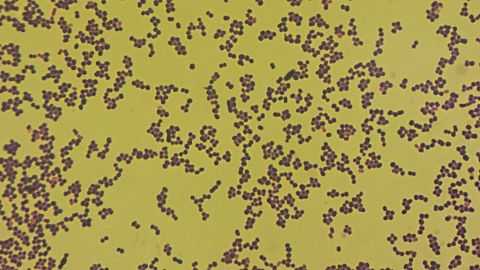Wikiversity Journal of Medicine
| About | Current issue | Past issues | Publish | Peer reviewers | Editors | Administration | Contribute |
 |
Also on Facebook and Twitter |
Authors: Mattila J, Häggström M

Aerococcus urinae is a type of bacteria that can lead to infections in the urinary system. This work describes a 73 year old man who had an infection with Aerococcus urinae. Samples of blood and urine were taken from the patient, and when put on blood cells the bacteria weakly changed the color of the blood cells around them. This result is called alpha hemolysis, and can be seen in Image 1. Adding Gram stain to the bacteria turned them violet, and therefore the bacteria were Gram-positive. This can be seen in microscopy in Image 2. The patient was treated with antibiotics.
Full article:
wiki (editable) | PDF format (checked)
Authors: Kipersztok L, Masukume G
This is an appendix to a peer-reviewed article. Included in the table are medical terms that have analogies related to food and drink (and also related to items involved in the preparation or consumption of food and drink).
Full article:
wiki (editable) | PDF format (checked)
Authors: Marr JS, Hubbard E, Cathey, JT
Based on historical interpretations of the Sūrat al-Fīl, the 105th Meccan Sura of the Qur’an, an epidemic occurred near Mecca circa 570 CE (Common Era), the Year of the Elephant in Islamic history. The five verses of the Sura are thought to be an allegorical description of the “Elephant War epidemic,” so named because invading Axumite (Ethiopian) forces from present-day Yemen included one or more war elephants.
Full article:
wiki (editable) | PDF format (checked)
Authors: Masukume G
This article uses Zambian data on coverage rates of visual inspection with acetic acid (VIA), together with data from India of mortality in a population screened by VIA, to reach the main estimation that one round of VIA screening would have prevented 50 cases of cervical cancer and 40 deaths from it, compared to South African data on cervical cancer mortality with prevailing cervical screening.
Full article:
wiki (editable) | PDF format (checked)
| About | Current issue | Past issues | Publish | Peer reviewers | Editors | Administration | Contribute |
